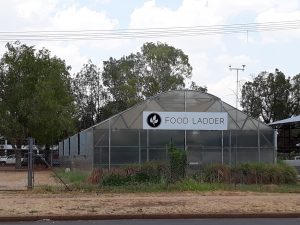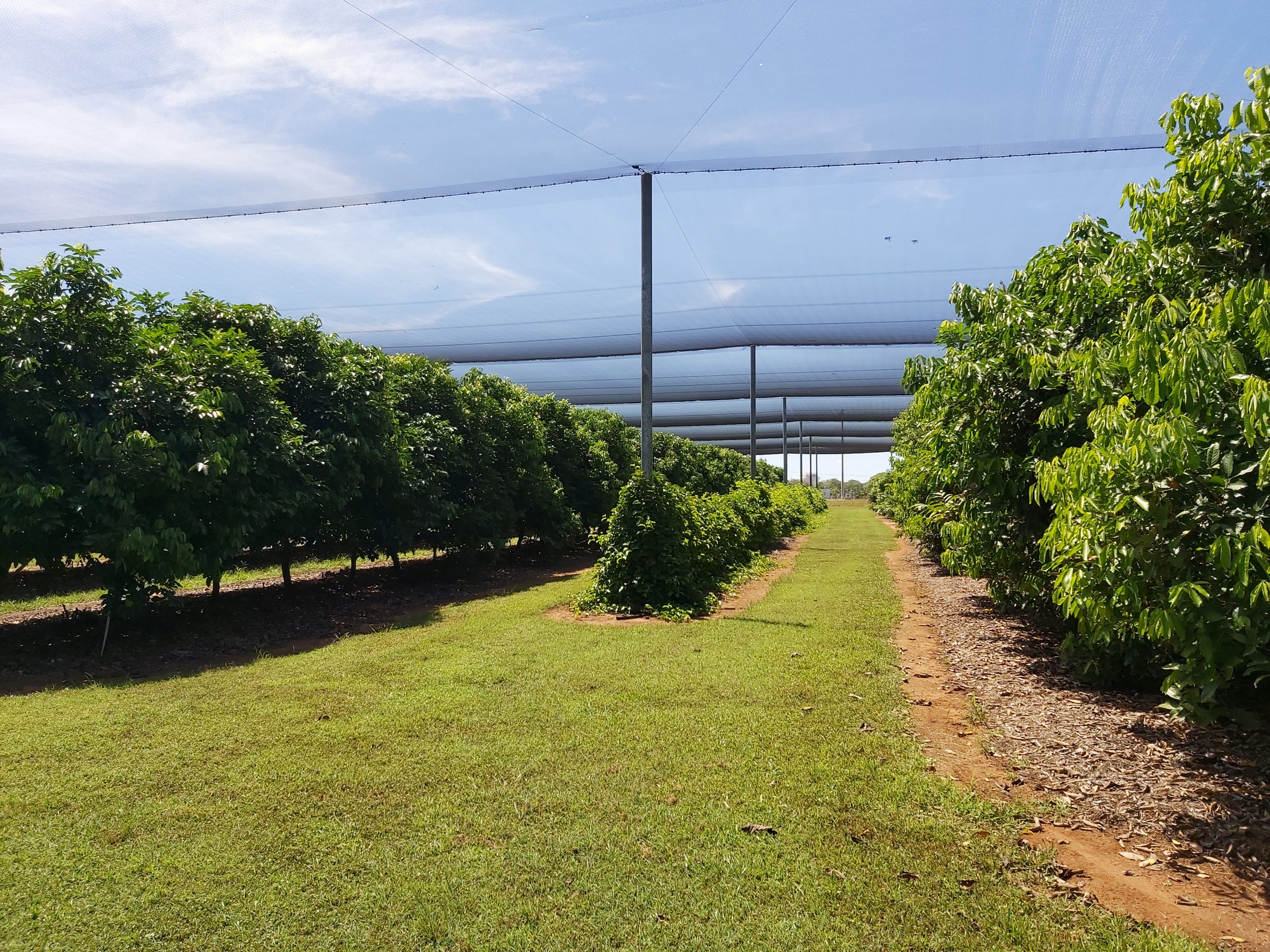Protected cropping focus across the Top End
The popularity of protecting growing practices is rising in the Northern Territory. In this article, NT Farmers Industry Development Manager Greg Owens outlines the reasons behind this growth, the investigation into year-round protected cropping vegetable production, and how NT Farmers is helping growers to understand the emerging on-farm technology.
The Northern Territory has already seen the development of a number of types of protected cropping. These have been mainly about keeping crops cool and excluding some very persistent winged and terrestrial vertebrate pests.
Around Darwin, there are many shade and netted structures that have been erected to address these problems. Bird netting on high value tropical fruit crops, like Rambutan, became essential in the early 1990s when the local Rainbow Lorikeets found how good they were to eat.
The other reason for protected cropping is about modifying the environment. In the Darwin region, this has mostly been about keeping the heat out – not locking it in. During the Dry season (winter), minimum temperatures are normally around 15 degrees Celsius (°C), and all days throughout the year are 30°C-plus. This has led to most structures being constructed of white shade cloth. Typically, these are used for the highest value crops such as Lebanese cucumbers and sometimes rotated with snake beans.
Predominantly, growers use in-ground cultivation. Even our larger hydroponics grower uses shade cloth and only produces continental and Lebanese cucumbers during the Dry season.
These structures also work well for tomatoes and capsicum, but it is hard to compete with these products grown in glass and plastic houses in the southern states during the season as the bulk of Northern Territory’s produce is sold in Sydney, Melbourne and Adelaide during the southern winter.
Investigating year-round production
Lately, there has been interest in achieving all year-round production. In the Wet-Dry monsoonal tropics, this is about managing the very high intensity rainfall; preparing for cyclonic events and dealing with never-ending crippling humidity that lasts for seven or eight months of the year.
The Department of Agriculture and Fisheries, Queensland (DAF, QLD) is leading a CRC Northern Australia (CRCNA) project looking at protected cropping in this region. It is also looking at how to meet these challenges and take advantage of the economic opportunities that come with the newer protected cropping systems.
There is a worldwide increase in protected cropping in the tropics where these environmental challenges are being overcome. The CRCNA project is collecting this information and is developing a best practice site in Ayr. The VegNET – Northern Territory team will be organising a grower’s trip to the facility when interstate movement restrictions are lifted.
The benefits of year-round production offered by protected cropping may not only be economic, but a source of nutritious fruit and vegetables for remote Northern Territory communities that are often isolated from normal supply chain for months at a time.
While many have tried this approach and failed, the Food Ladder group is kicking goals in this space and providing critical training to indigenous students and communities. Food Ladder has projects in Katherine, Tennant Creek and Maningrida, and you can find out more on its website.

Educating Top End producers
In late February, The VegNET – Northern Territory team organised a protected cropping R&D forum. Speakers at the forum included DAF, QLD Senior Horticulturist Dr Elio Jovicich, Western Australian vegetable grower and 2019 Nuffield Scholar Bao Duy Nguyen and VegNET – Western Australia Industry Development Officer, Truyen Vo. They were joined by AUSVEG and other industry representatives to address Northern Territory vegetable growers and participate in field trips.
Held in the Top End, the R&D forum gave local producers a chance to hear about what is happening in northern Queensland and Western Australia and learn from the other attendees.
The VegNET – Northern Territory team will continue to offer ongoing assistance to vegetable growers who are looking to take advantage of the developing technologies, and markets for protected crop produce, in our unique and challenging environment.
Find out more
Please contact Greg Owens at greg@ntfarmers.org.au.
Regional capacity building to grow vegetable businesses – Northern Territory is a strategic levy investment under the Hort Innovation Vegetable Fund.
This project has been funded by Hort Innovation using the vegetable research and development levy and contributions from the Australian Government.
Project Number: VG18003
This article first appeared in the winter 2020 edition of Vegetables Australia. Click here to read the full publication.

